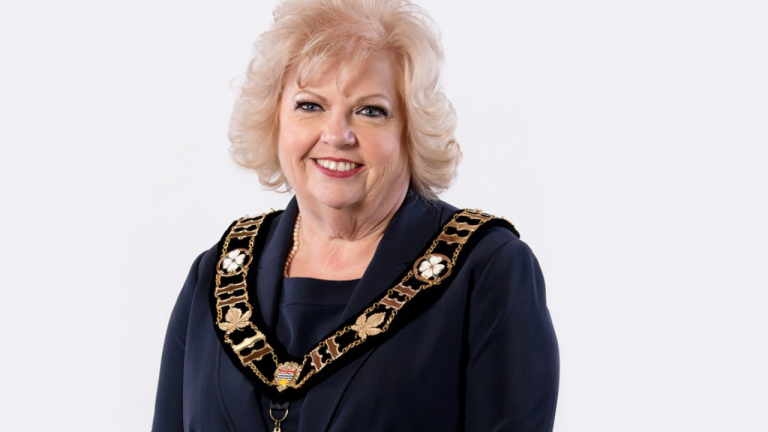
The Art of Culinary Traditions
Culinary traditions are more than just recipes; they are a celebration of culture and history. From the unique ingredients to the cooking techniques, every dish tells a story. Let’s dive into the world of food and discover how it shapes our cultural identity.
Regional Ingredients and Techniques
Every region has its own special ingredients and cooking methods. These elements are often influenced by the local climate, geography, and available resources. For example, Mediterranean cuisine is rich in olive oil and fresh vegetables, while Asian dishes often feature rice and soy products. Understanding these regional differences can give us a deeper appreciation for the diversity of global cuisine.
Festive Foods and Celebrations
Food plays a central role in many cultural celebrations. Think of Thanksgiving in the United States, where turkey and pumpkin pie are must-haves, or the Lunar New Year in China, celebrated with dumplings and fish. These festive foods are not just delicious; they are symbols of tradition and community.
Celebrating with food brings people together, creating a sense of belonging and shared history.
Street Food Adventures
Street food offers a unique glimpse into a culture’s everyday life. From the bustling markets of Bangkok to the food trucks in Los Angeles, street food is both accessible and authentic. It’s a way to experience local flavors without the formality of a restaurant. Plus, it’s often where you’ll find the most innovative and mouth-watering dishes.
Exploring street food is like taking a gastronomic journey through a culture’s culinary landscape.
Art as a Cultural Expression
Art is a powerful way to show and share culture. It tells stories, shows beliefs, and connects people. Artistic expression can be seen in many forms, from traditional crafts to modern art. Let’s dive into how art reflects culture.
Traditional Crafts and Art Forms
Traditional crafts are a window into a culture’s soul. They show the skills and creativity passed down through generations. These crafts include pottery, weaving, and painting. Each piece tells a story of the artist’s cultural background and heritage.
Modern Interpretations
Modern art takes traditional ideas and gives them a new twist. Artists mix old and new techniques to create something fresh. This fusion shows how cultures evolve and adapt over time. It’s a dance between the past and the present, creating a dialogue in artistic expression.
Influence of History and Religion
History and religion play a big role in shaping art. They provide themes and symbols that artists use to express their ideas. From ancient temples to modern murals, these influences are everywhere. They help us understand a culture’s identity and values.
Art bridges cultures and promotes peace. It acts as a universal language that everyone can understand.
Art is more than just pretty pictures. It’s a way to connect with others and share our stories. By exploring different art forms, we can learn more about the world and each other.
Traditional Festivals and Celebrations
Rituals and Customs
Festivals around the world are a vibrant celebration of art, music, cuisine, and cultural diversity. These events are often steeped in rituals and customs that have been passed down through generations. For instance, the Moon Festival in China is celebrated with mooncakes, symbolizing unity and family reunion.
Music and Dance
Music and dance are integral parts of many cultural festivals. From the rhythmic beats of African drums to the elegant movements of Japanese traditional dance, these performances bring communities together and offer a glimpse into the soul of a culture. The Fes Festival of World Sacred Music in Morocco is a prime example, showcasing diverse musical traditions from around the globe.
Costumes and Attire
Traditional festivals often feature elaborate costumes and attire that reflect the cultural heritage of a community. Whether it’s the colorful saris of India during Diwali or the intricate masks worn during the Venetian Carnival, these garments add a visual spectacle to the celebrations. The Boryeong Mud Festival in South Korea, for example, is known for its unique and playful attire, where participants cover themselves in mud as part of the festivities.
Festivals are more than just events; they are a journey through the rich tapestry of human culture, offering a unique opportunity to experience the world in all its diversity.
Highlights
- expatica festival: A vibrant celebration of art, music, cuisine, and cultural diversity.
- Fes Festival of World Sacred Music: Showcasing diverse musical traditions from around the globe.
- Boryeong Mud Festival: Known for its unique and playful attire, where participants cover themselves in mud as part of the festivities.
- Moon Festival: Celebrated with mooncakes, symbolizing unity and family reunion.
Fashion Through Cultural Lenses
Traditional Attire and Modern Adaptations
Exploring identity through the cultural crossroads of fashion is a fascinating journey. Fashion reflects cultural heritage, personal expression, and societal norms. Traditional attire reimagined in contemporary fashion showcases the beauty of fusion wear, celebrating cultural diversity and global dialogue.
Cultural Influences on Global Fashion
The stitch of time shows how fashion evolves norms. Historical evolution and cultural influences shape fashion trends, transforming them from mere survival tools to forms of art. Globalization’s impact on local fashion is profound, with cross-cultural trends and celebrity influence bringing traditional attires into modern wardrobes.
Sustainable Fashion Practices
In vogue, decoding the boundaries of style means embracing fluidity and diversity. Sustainable fashion practices are gaining traction, focusing on eco-friendly materials and ethical production. This shift not only benefits the environment but also honors cultural traditions by preserving artisanal techniques.
Fashion is more than just clothing; it’s a powerful expression of identity and culture. Embracing diverse styles enriches our global tapestry.
Health and Wellness Practices Across Cultures
Traditional Healing Methods
Across the globe, traditional healing methods have been passed down through generations. From herbal remedies in China to Ayurveda in India, these practices focus on natural ways to heal the body and mind. They often include a mix of plants, minerals, and spiritual rituals. These methods not only aim to cure ailments but also to maintain a balanced life.
Mindfulness and Meditation
Mindfulness and meditation are key to achieving mental peace and clarity. Cultures worldwide have their own unique practices. For instance, Japan’s Zen meditation and India’s yoga are both designed to help individuals connect with their inner selves. These practices are not just about relaxation; they are about enhancing your life by fostering a deeper understanding of oneself.
Embracing mindfulness and meditation can transform your daily routine, making you more aware and present in each moment.
Dietary Practices and Superfoods
Dietary habits vary widely across cultures, influenced by geography, religion, and family customs. In the Mediterranean, diets rich in olive oil and fish are common, while in Japan, a focus on fresh vegetables and seafood prevails. Superfoods like quinoa from South America and turmeric from India are celebrated for their health benefits. These foods not only nourish your body and soul but also connect you with food’s spiritual essence and cultural wisdom.
By exploring these diverse health and wellness practices, you can embrace a balanced lifestyle for vitality and joy.
Traveling for Cultural Immersion
When traveling, embracing local customs is key to a meaningful experience. Learn the local language, dress modestly at religious sites, and always be respectful. These small gestures can make a big difference in how you’re received by the community.
For a truly immersive experience, consider staying with locals. Homestays offer a unique opportunity to live like a local, participate in daily activities, and gain a deeper understanding of the culture. It’s a way to learn by traveling, where each destination becomes a classroom, and every interaction is a lesson in humanity, kindness, and the beauty of our world.
Engage in cultural workshops to dive deeper into the traditions and crafts of a region. Whether it’s a cooking class, a dance lesson, or a craft workshop, these activities provide hands-on learning and a chance to connect with local artisans. Embrace spontaneity, seek local insights, and leave with inspiring stories.
Technology and Cultural Preservation

Digital Archives and Museums
Digital archives and museums are revolutionizing how we preserve culture. By creating digital twins of artifacts, we can ensure that even if the original is lost, a detailed replica remains. This technology offers prominent use cases for cultural heritage, making it accessible to people worldwide.
Virtual Reality Cultural Tours
Virtual reality (VR) is taking cultural tours to the next level. Imagine walking through ancient ruins or historic sites without leaving your home. VR allows for immersive experiences that bring history to life, making it easier to understand and appreciate different cultures.
Innovations in Cultural Education
Innovations in cultural education are bridging the gap between tradition and modernity. Digital technology and culture journals focus on preserving digital content, ensuring that future generations can learn about their heritage. By navigating the nuances of modern restoration techniques, we can balance authenticity and innovation, embracing learning and experimentation in restoration projects.
Embracing technology in cultural preservation is not just about saving the past; it’s about making it relevant for the future.
- Digital twins of artifacts
- Virtual reality tours
- Modern restoration techniques
Conclusion
Exploring diverse cultures through food, art, and traditions is like opening a window to the world. Each bite, brushstroke, and custom tells a story of a people and their history. By embracing these differences, we learn to appreciate the beauty in diversity. This journey not only enriches our minds but also brings us closer together as a global community. So, let’s continue to celebrate and share these cultural treasures, making our world a more connected and understanding place.
Frequently Asked Questions
Why is food important in understanding a culture?
Food shows a lot about a culture’s history, values, and traditions. By tasting different dishes, you can learn about the ingredients and techniques that make each culture unique.
What are some traditional healing methods in different cultures?
Many cultures have their own healing practices. For example, Ayurveda from India uses herbs and diet, while Traditional Chinese Medicine includes acupuncture and herbal treatments.
How does art reflect cultural identity?
Art often tells the story of a culture. Traditional crafts, paintings, and sculptures can show a culture’s history, beliefs, and values.
What are some popular traditional festivals around the world?
There are many! For example, Diwali in India, Carnival in Brazil, and Chinese New Year are all famous festivals that showcase rich traditions and celebrations.
How has modern technology helped in preserving cultures?
Modern technology like digital archives, virtual reality tours, and online museums help keep cultural stories and artifacts safe and accessible for future generations.
What is the role of traditional attire in modern fashion?
Traditional attire often inspires modern fashion. Designers may use traditional patterns, fabrics, and styles to create new, trendy clothes.






